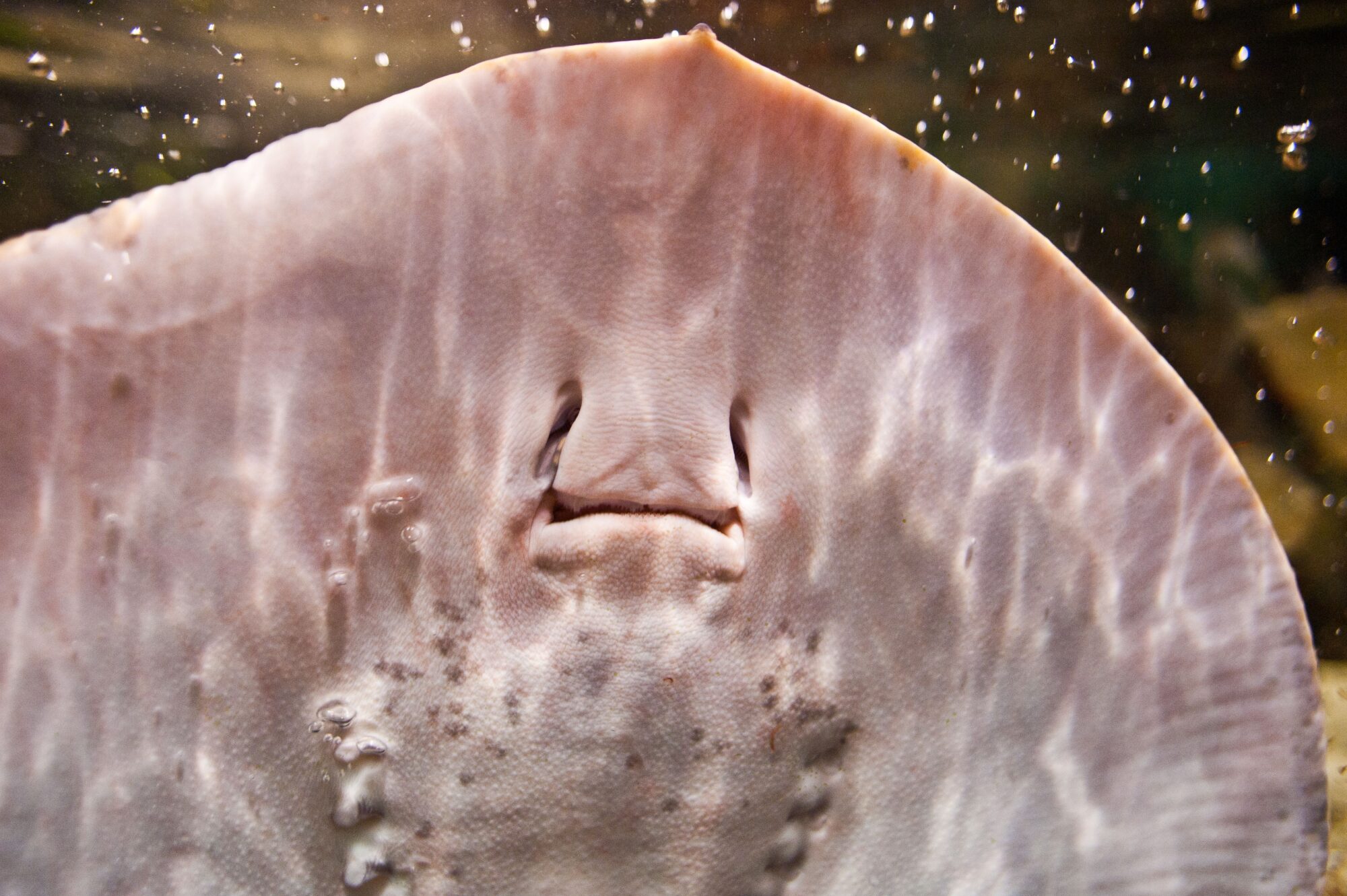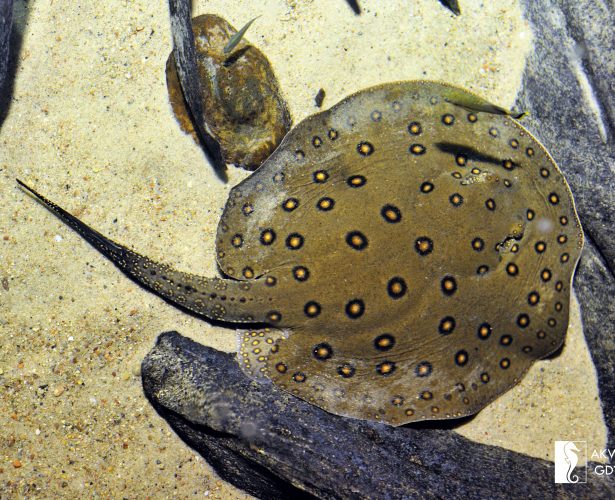Order: Myliobatiformes
Family: Potamotrygonidae
Potamotrygon motoro


This is one of seven species of the genus Potamotrygon inhabiting the southern part of South America. It is most commonly found in the Parana Basin, specifically in the midwestern part of Brazil, and can also be found in the Amazon, Uruguay, and Orinoco Basins. It prefers calm waters with a sandy base, especially streams and lagoons, and stays still during the day, buried in sandy sediments. It is closely associated with the base of rivers, so the depth at which it can be found depends on the depth of the river. In the upper Parana River, it occurs at depths of 0.5-2.5 meters, whereas in the Uruguay River, it occurs at depths of 7 to 10 meters. This cartilaginous fish defends its territory and leads a solitary life, undergoing migrations of unknown purpose that can cover more than 100 km. The information about its lifespan in the wild is unavailable, but in captivity it can reach the age of 15 years.
It uses its sense of smell during hunting, and electroreceptors (ampullae of Lorenzini) are also helpful because they detect electric stimuli produced by organisms buried in the sand. The type of food it eats depends on age and habitat, with juveniles eating plankton and later expanding their diet to include mollusks, crustaceans, and aquatic insect larvae. Adults consume mainly fish and crustaceans.
The coloration of the animals also depends on the habitat. The dorsal side is beige, brown, or gray and has yellow-orange spots surrounded by black rings. The ventral side is light in color. Its flattened dorsal-ventral body has an oval shape with a robust tail that bears two venomous spines used for protection. The maximum length is 1 m with the shield being 50 cm wide and weight going up to even 35 kg, although usually they are smaller (60 cm long and 10 kg). The mouth is located on the ventral side, whereas the eyes are on the dorsal side of the head, which gives them a nearly 360° field of vision.
Around the time of mating, the lips of the female’s cloaca become swollen and bloody, presumably from copulation (this may have given rise to the folk notion that female stingrays menstruate).
This species exhibits polygyny, which means that one male can copulate with many females. At the beginning the eggs have the diameter of around 30 mm. During development their nutrition comes not only from gall bladder but also directly from the female’s womb. The secretion from the womb is rich in nutrients and it helps them develop way better compared to receiving nutrition from the gall bladder alone. Gestation lasts approximately 6 months and birthing usually takes place in the rainy season. From 3-21 pups may be born in a brood and the number of young in a brood is always odd. The younger females always have smaller broods. Juveniles are approximately 10 cm long. They will reach their sexual maturity at the age of 3. If the pregnant female gets caught, it will abort its embryos. Reproduction follows a cycle in which one brood is birthed every year for three years in a row, followed by a several-year reproductive inactivity. This fish is caught due to its tasty meat. Juveniles are popular on the market and sold as ornamental fish. It has few predators in its natural habitat. They themselves play an important role in controlling insect populations through their diet.
How does the stingray move?
When the stingray moves in the depth of water, it looks as if it were levitating. It uses its wide and well-developed pectoral fins, which can be found along the fish’s body, for swimming. When it moves along the base of the water it uses its pelvic fins with which it pushes itself of the ground.
Below you can see the birth of stingrays in the Gdynia Aquarium.


